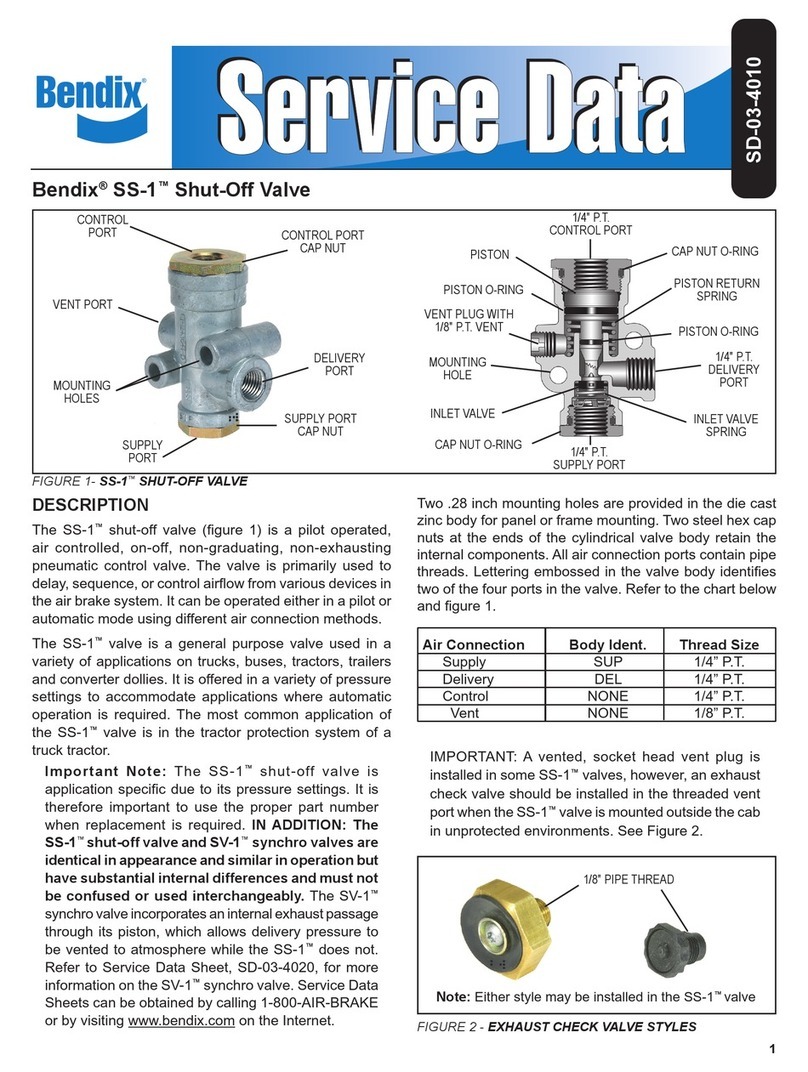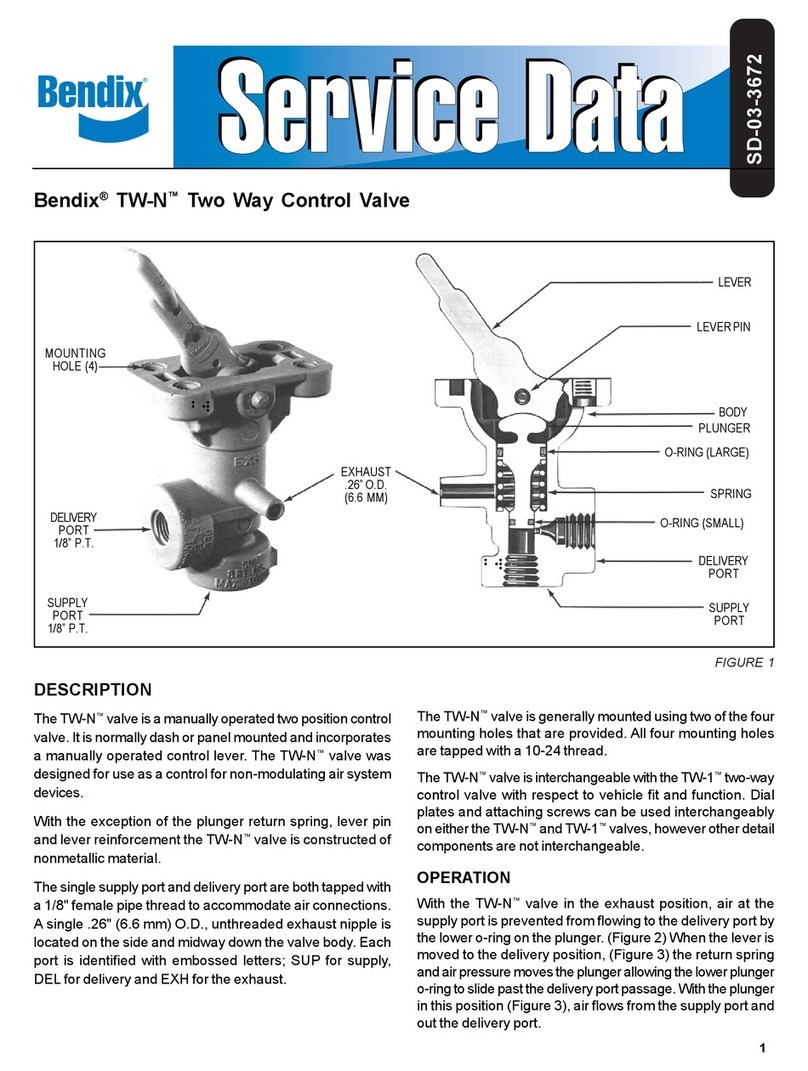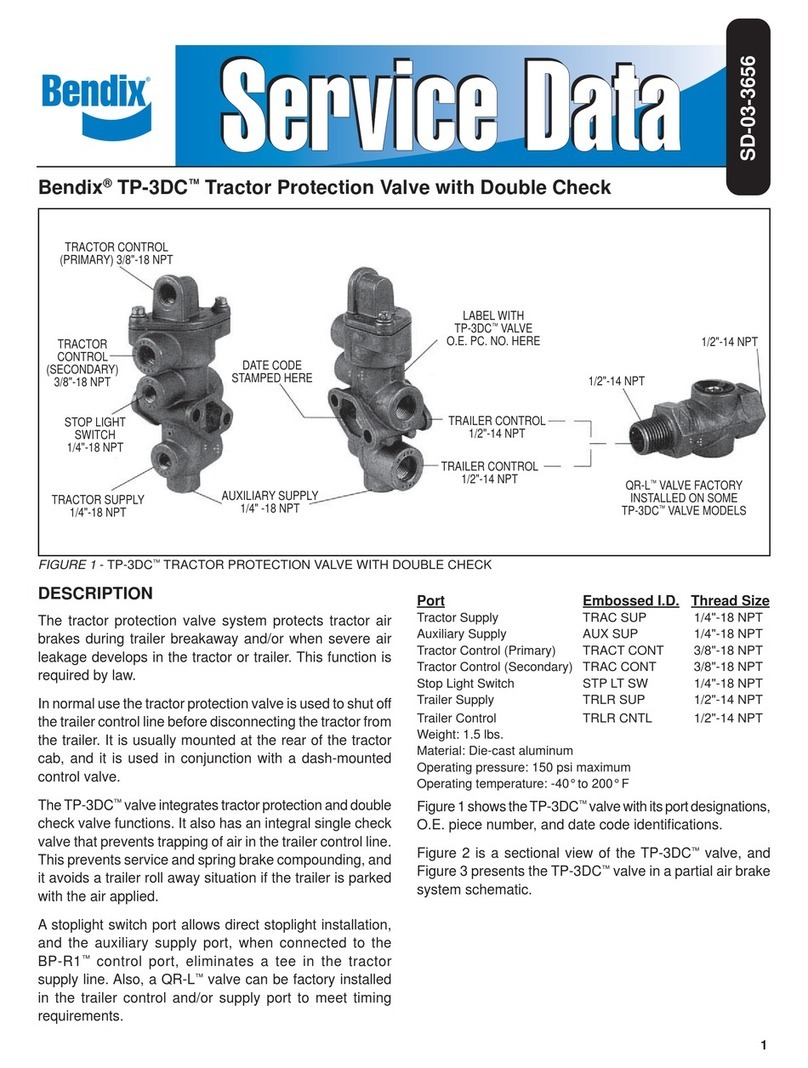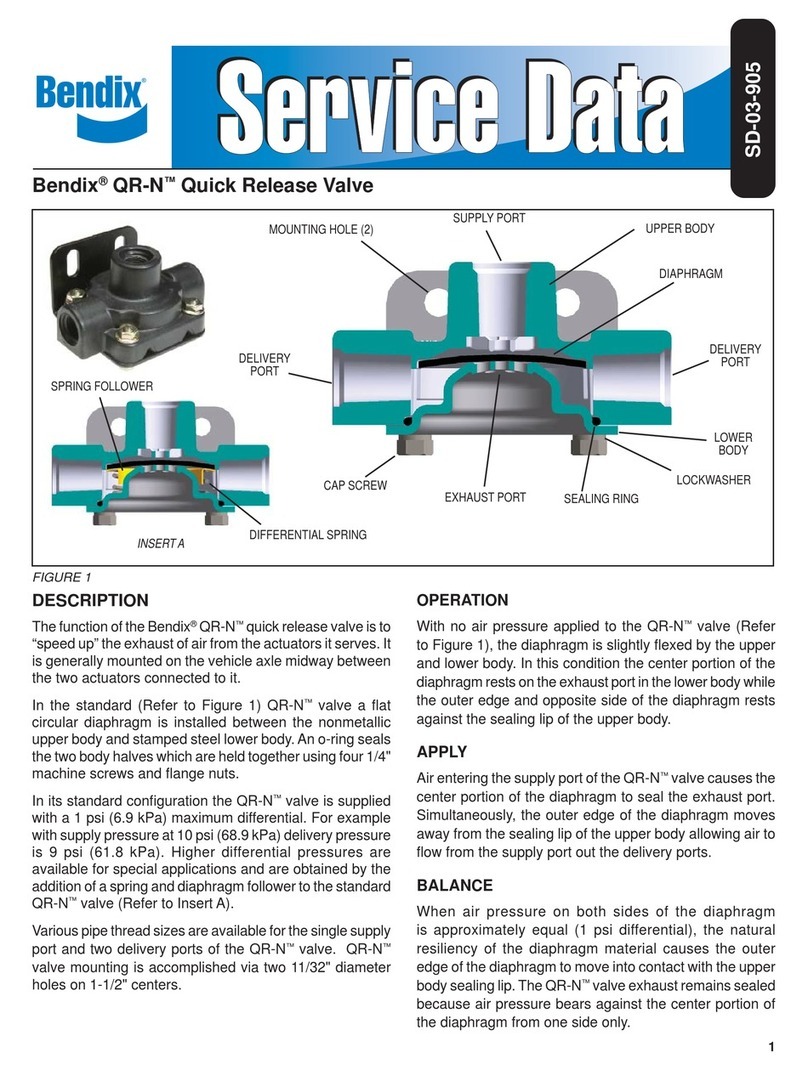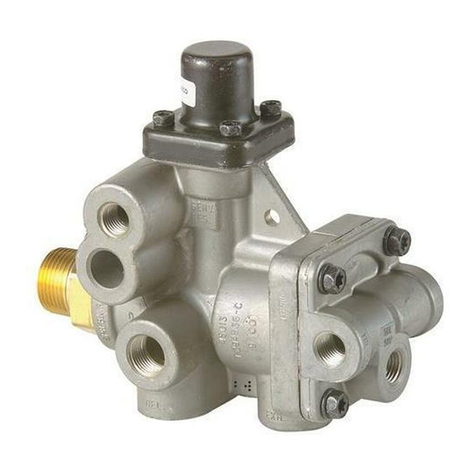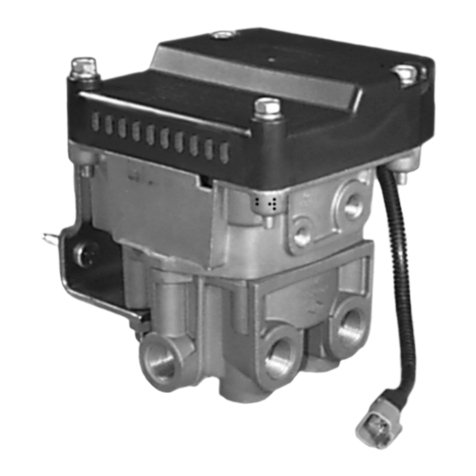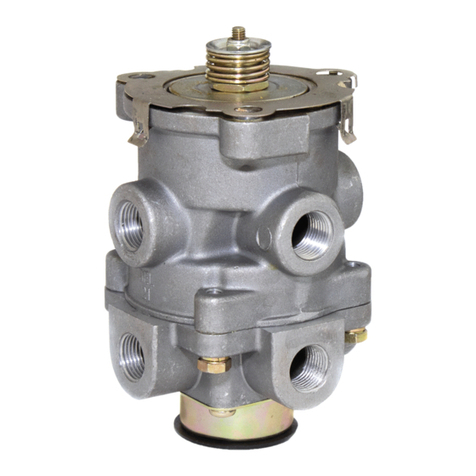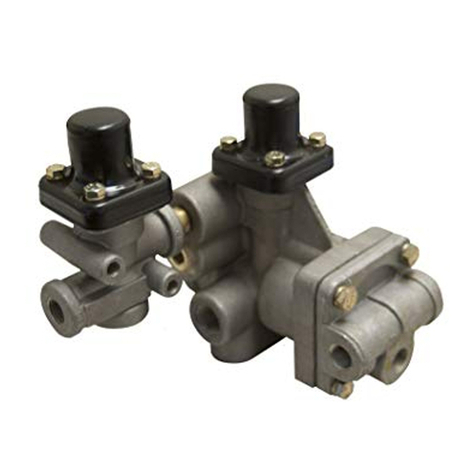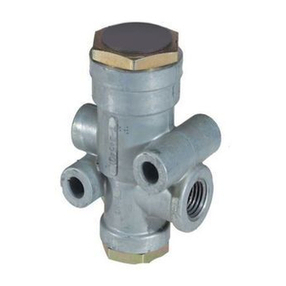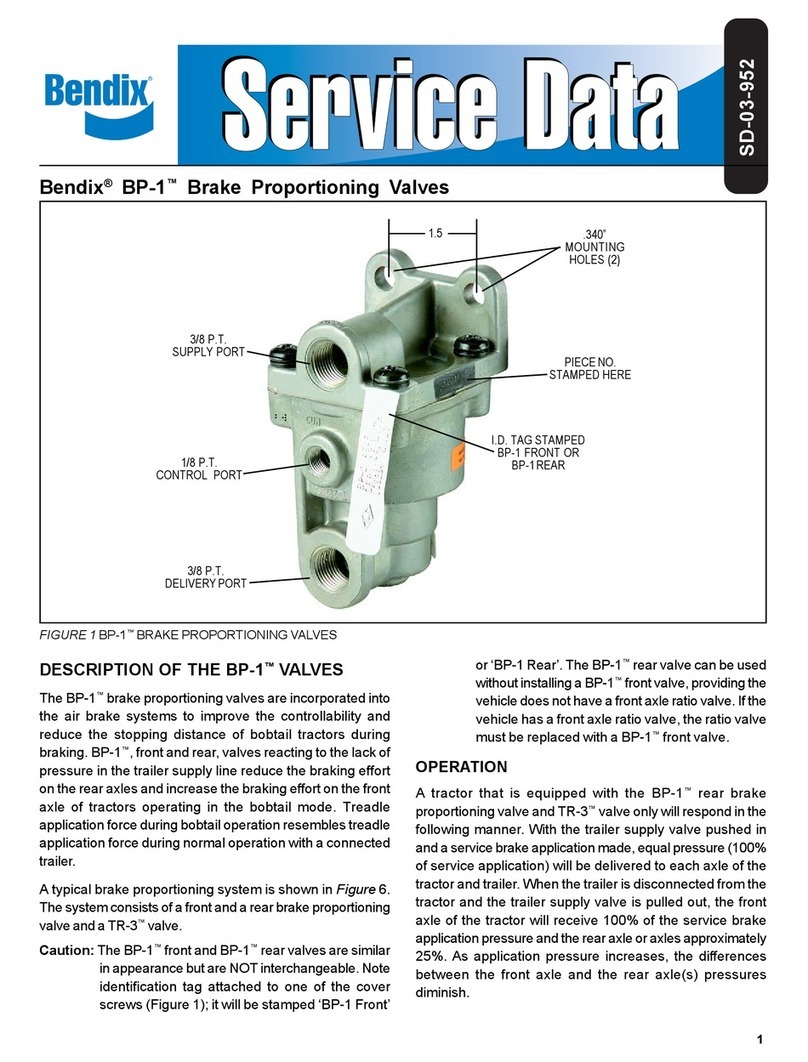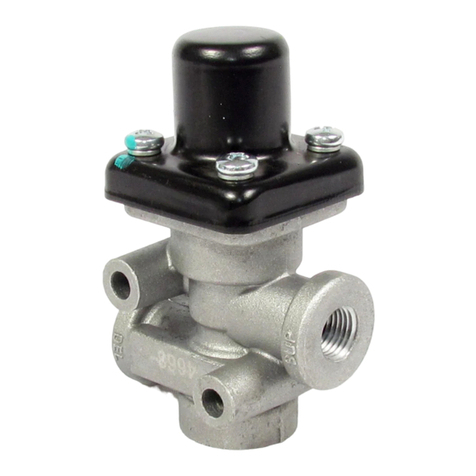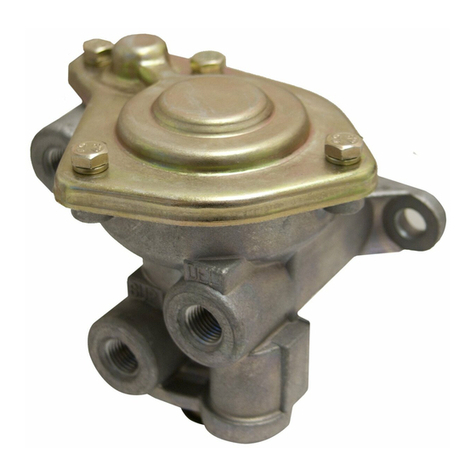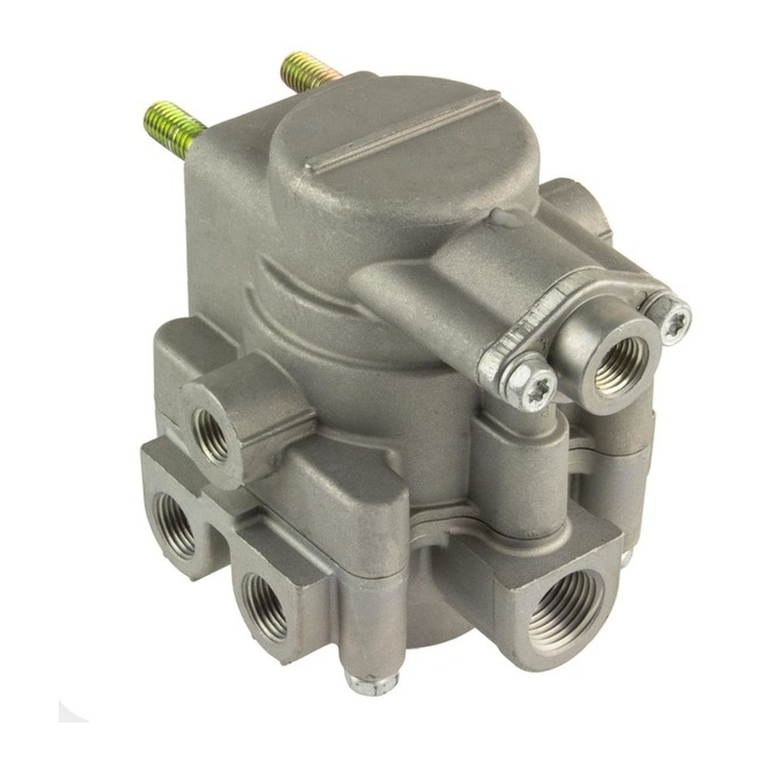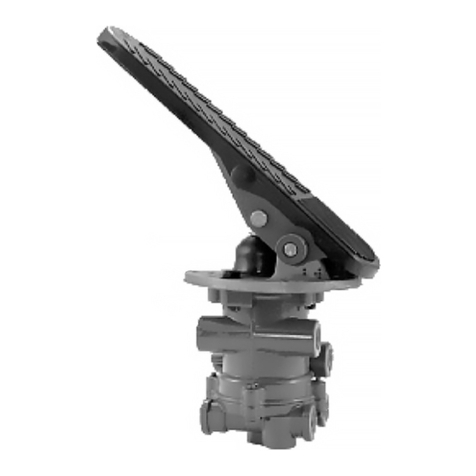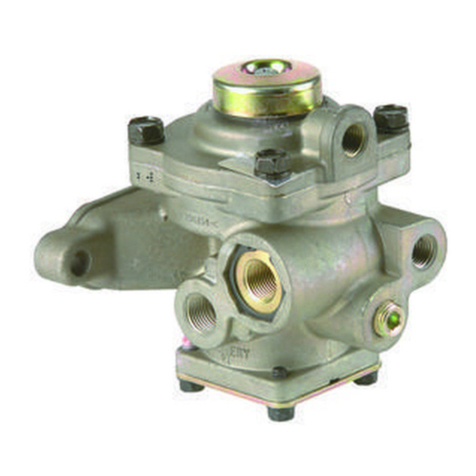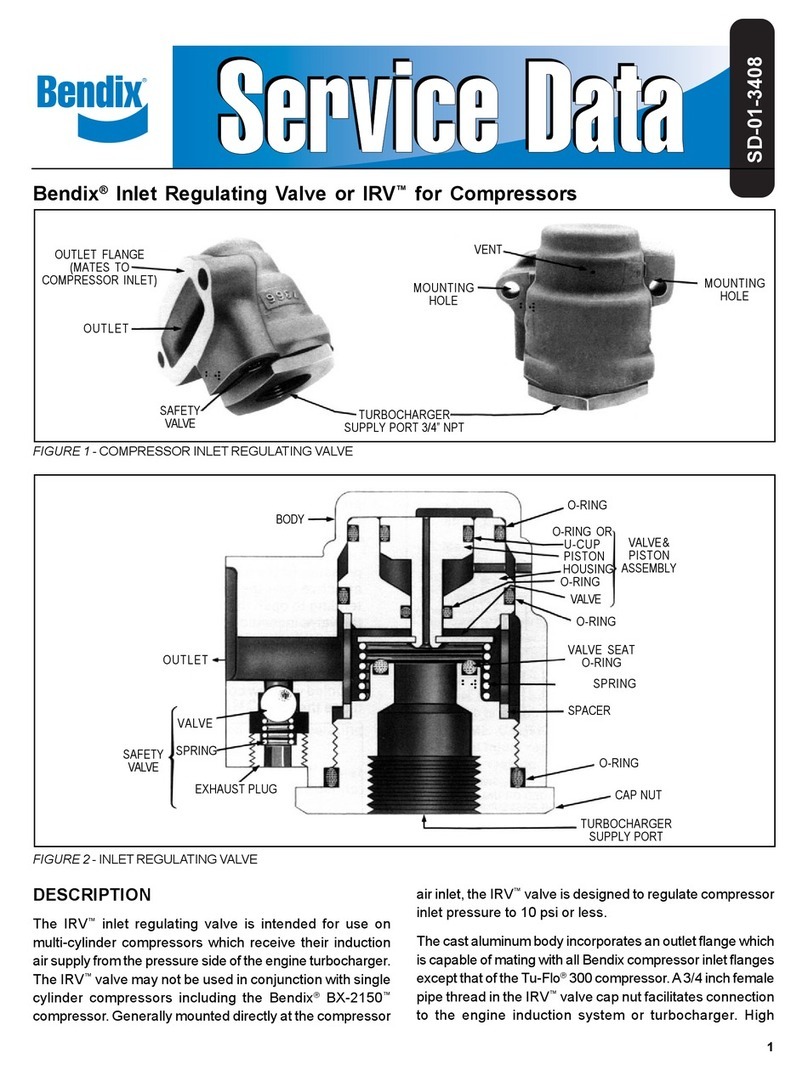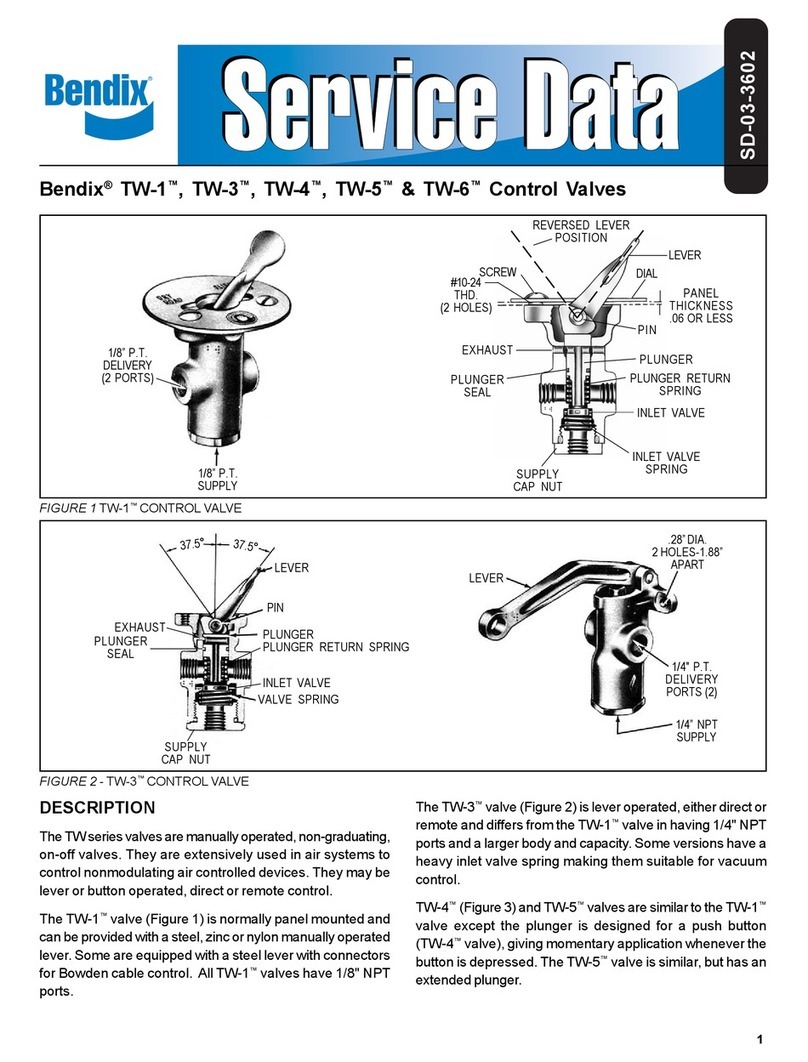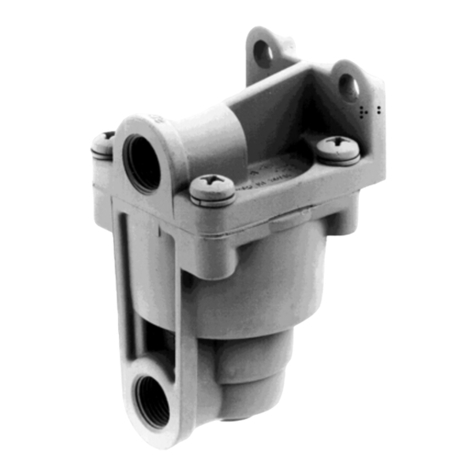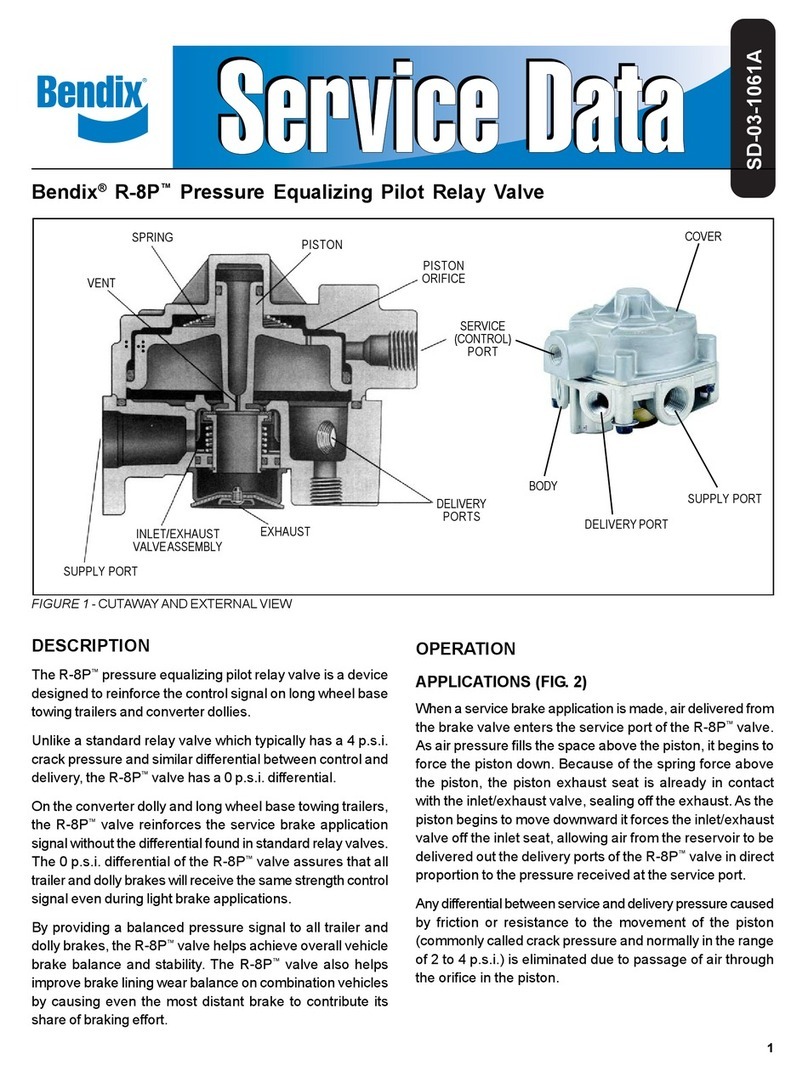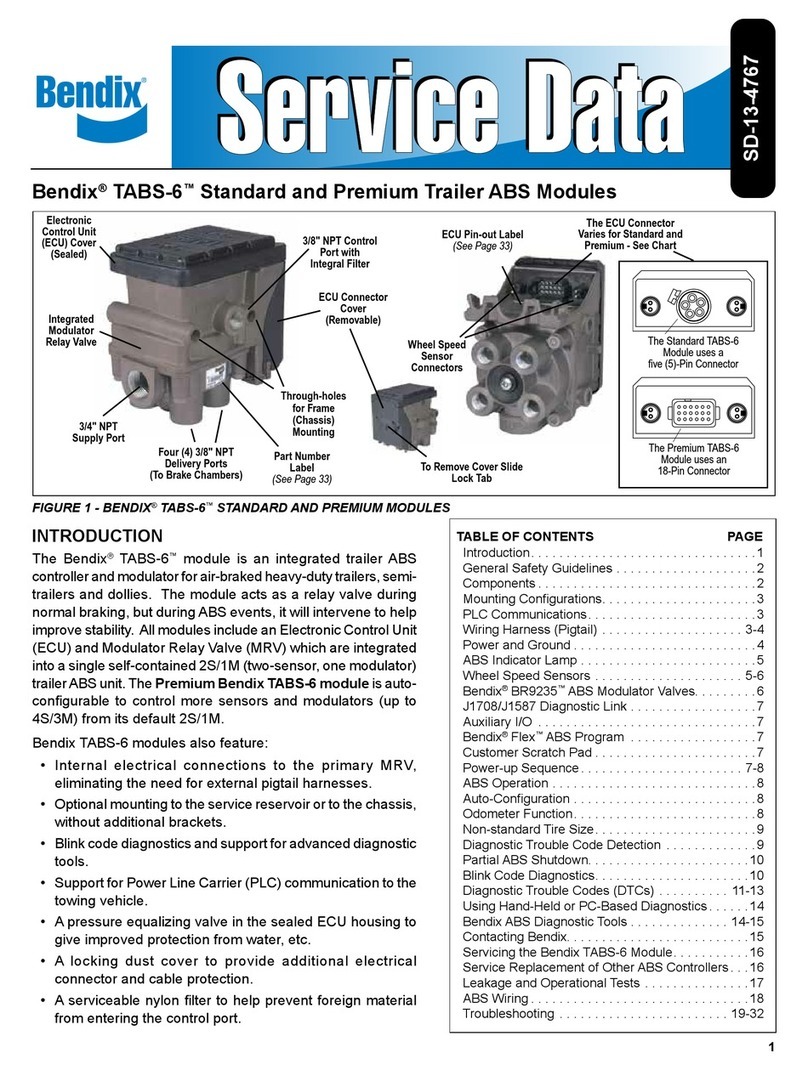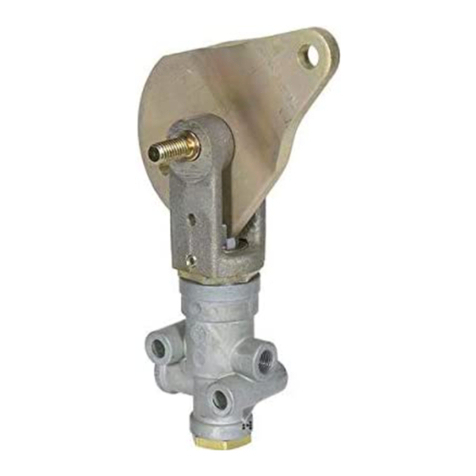
2
The modulator consists of a die cast metal and plastic body
that houses one normally-open solenoid, one normally-
closed solenoid, and an inlet and exhaust diaphragm
valve. A three-pin weather-resistant electrical connector
is an integral part of the modulator solenoid assembly
and delivers the vehicle controller’s commands to the
modulator. Two mounting holes are provided for frame or
crossmember mounting of the valve.
The Bendix®M-40QR™modulator is the direct replacement
for the Bendix®M-32QR™modulator (See Figure 2). The
Bendix M-40QR modulator has a bias valve to provide an
internal quick-release function.
The supply, delivery, and exhaust ports on the Bendix M-40
modulators have embossed identication codes.
Port ID Air Hose
Connection Function
1, SUP Supply Air enters from a valve (typically
foot, relay, or quick release).
2, DEL Delivery Air is delivered to the service
actuators.
3, EXH Exhaust Air is vented to the atmosphere.
Figure 3 - Port Designation and Function
APPLICATIONS
Bendix M-40™modulators may be used for various purposes
on a vehicle, including ABS and stability interventions. In
applications using these PMVs, an external quick release
valve may also be required, depending on the system
design. Where the modulator is used for individual wheel
control applications, it is typically the last control valve
through which air passes on its way to the service brake
actuator. See Figure 4 for a typical system schematic.
PRESSURE MODULATOR VALVE (PMV) AND
TRACTION CONTROL VALVE (TCV) CHUFF TEST
A wiring harness connects the vehicle modulators to the
controller. The ABS controller is able to simultaneously,
and independently, control the individual modulators.
Bendix®Electronic Control Units (ECUs) perform a Bendix-
patented PMV and TCV Chuff Test. The Chuff Test is
an electrical and pneumatic PMV test that can assist
maintenance personnel in verifying proper PMV wiring and
installation. This test is performed only when the vehicle
is stationary (if the vehicle moves, the Chuff Test will not
be performed).
NOTE: If there are any active Diagnostic Trouble Codes
(DTCs), the stop lamp cross-check portion of the Chuff Test
will not be carried out until all DTCs are fully diagnosed and
corresponding repairs are successfully conducted. The
ESP/ATC dash indicator lamp ATC/ESP Lamp –a lamp that
indicates when stability functions, including traction control,
GENERAL SAFETY GUIDELINES
WARNING! PLEASE READ AND
FOLLOW THESE INSTRUCTIONS
TO AVOID PERSONAL INJURY OR DEATH:
When working on or around a vehicle, the following
guidelines should be observed AT ALL TIMES:
▲Park the vehicle on a level surface, apply the parking
brakes and always block the wheels. Always wear personal
protection equipment.
▲Stop the engine and remove the ignition key when working
under or around the vehicle. When working in the engine
compartment, the engine should be shut off and the ignition
key should be removed. Where circumstances require that
the engine be in operation, EXTREME CAUTION should be
used to prevent personal injury resulting from contact with
moving, rotating, leaking, heated or electrically-charged
components.
▲Do not attempt to install, remove, disassemble or
assemble a component until you have read, and thoroughly
understand, the recommended procedures. Use only the
proper tools and observe all precautions pertaining to use
of those tools.
▲If the work is being performed on the vehicle’s air brake
system, or any auxiliary pressurized air systems, make
certain to drain the air pressure from all reservoirs before
beginning ANY work on the vehicle. If the vehicle is
equipped with a Bendix®AD-IS®air dryer system, a Bendix®
DRM™dryer reservoir module, or a Bendix® AD-9si®air
dryer, be sure to drain the purge reservoir.
▲
Following the vehicle manufacturer’s recommended
procedures, deactivate the electrical system in a manner
that safely removes all electrical power from the vehicle
.
▲Never exceed manufacturer’s recommended pressures.
▲Never connect or disconnect a hose or line containing
pressure; it may whip and/or cause hazardous airborne
dust and dirt particles. Wear eye protection. Slowly open
connections with care, and verify that no pressure is
present. Never remove a component or plug unless you are
certain all system pressure has been depleted.
▲Use only genuine Bendix®brand replacement parts,
components and kits. Replacement hardware, tubing, hose,
fittings, wiring, etc. must be of equivalent size, type and
strength as original equipment and be designed specifically
for such applications and systems.
▲Components with stripped threads or damaged parts should
be replaced rather than repaired. Do not attempt repairs
requiring machining or welding unless specifically stated
and approved by the vehicle and component manufacturer.
▲Prior to returning the vehicle to service, make certain all
components and systems are restored to their proper
operating condition.
▲For vehicles with Automatic Traction Control (ATC), the ATC
function must be disabled (ATC indicator lamp should be
ON) prior to performing any vehicle maintenance where
one or more wheels on a drive axle are lifted off the ground
and moving.
▲The power MUST be temporarily disconnected from the
radar sensor whenever any tests USING A DYNAMOMETER
are conducted on a vehicle equipped with a Bendix®
Wingman®system.
▲You should consult the vehicle manufacturer's operating
and service manuals, and any related literature, in
conjunction with the Guidelines above.
